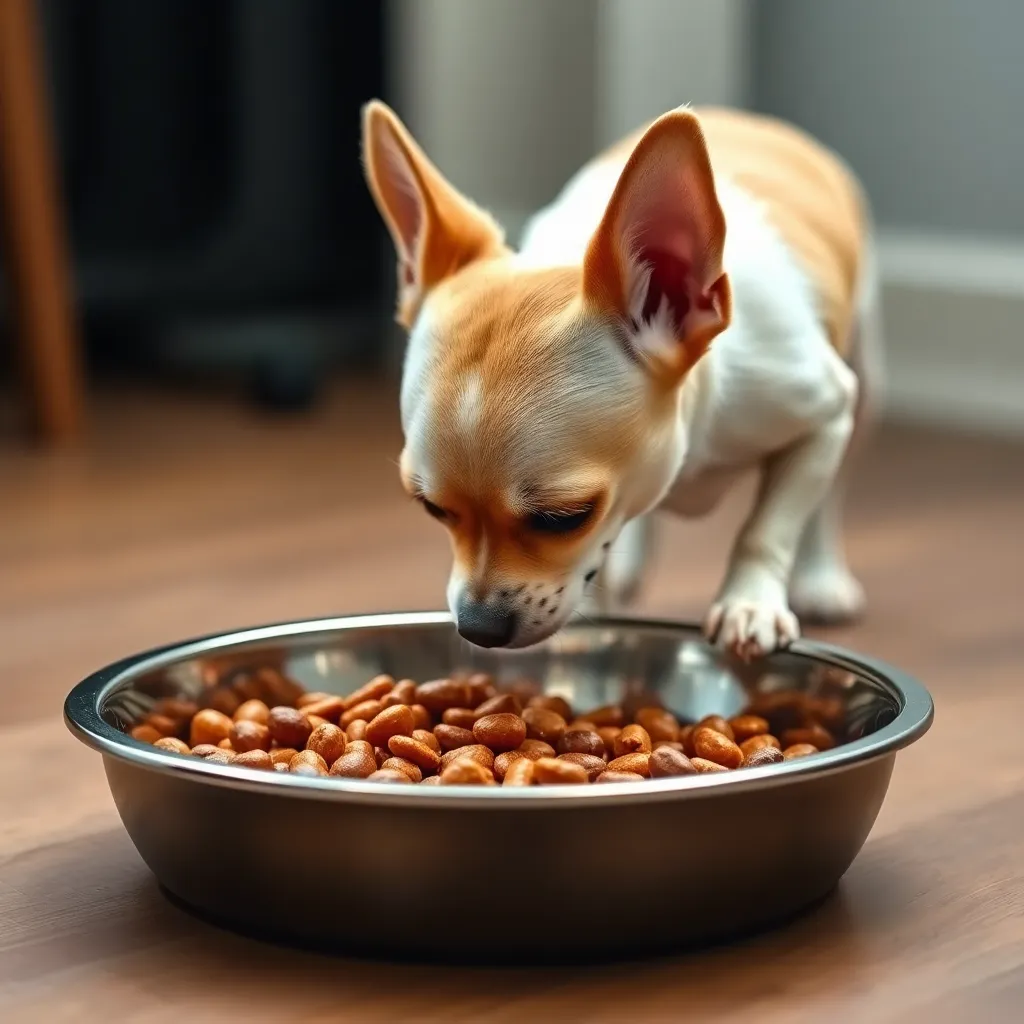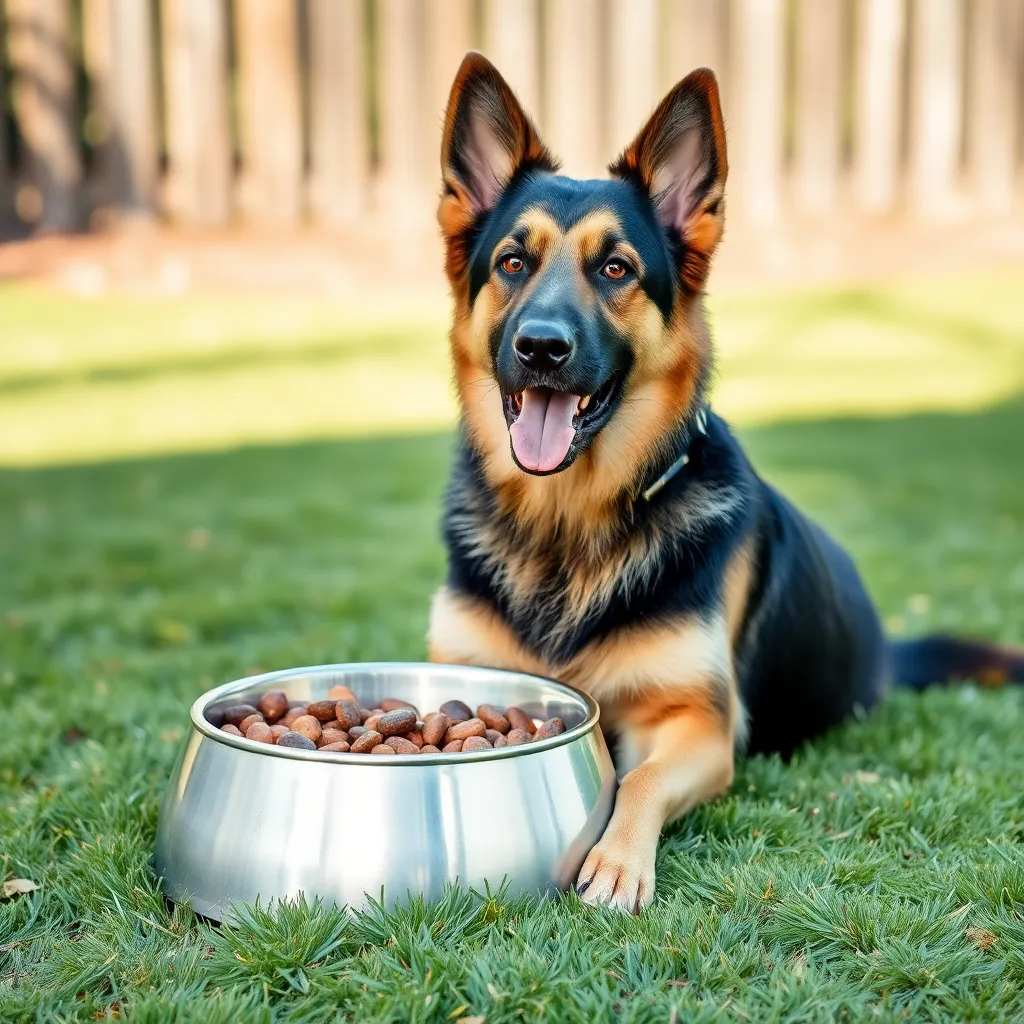Choosing the right size bowl for your dog is crucial for their comfort, health, and mealtime experience. Beyond simply choosing based on aesthetics or convenience, it’s essential to account for your dog’s breed, eating habits, and even their age or specific needs. In this article, we’ll dive into detailed considerations that will help you choose the perfect bowl, offering realistic insights for dog owners who want to make an informed decision.
Why Bowl Size Matters for Your Dog
Impact on Digestion and Health
The size of your dog’s bowl can directly influence how much they eat and how well they digest their food. For example, if your dog eats too quickly from a bowl that’s too large, it may overeat and experience bloating, gas, or even more serious issues like gastric dilatation-volvulus (GDV), a condition common in large breeds that can be life-threatening. On the flip side, if the bowl is too small, your dog might feel frustrated and rushed, leading to gulping, which also increases the risk of indigestion.

Imagine a Labrador Retriever being fed from a small bowl designed for a toy breed. The dog might wolf down its meal too quickly, swallowing excess air, which can lead to discomfort or even vomiting. Over time, this feeding behavior could contribute to a more serious condition like bloat.
Encouraging Proper Posture
Dogs, especially larger or senior dogs, need bowls that allow them to eat in a natural and comfortable posture. For large breeds, hunching over to eat from a bowl placed on the floor can strain their neck, spine, and shoulders. This is particularly true for senior dogs or those with arthritis. Using an elevated bowl for large breeds can prevent these issues and promote healthier eating.
An aging Great Dane with arthritis struggles to bend down to reach its food in a standard bowl. Switching to an elevated feeder allows the dog to eat more comfortably without worsening its joint pain, leading to a more enjoyable and less stressful mealtime.
Size Considerations Based on Breed and Eating Habits
Small Breeds and Toy Breeds
For small dogs like Chihuahuas, Pomeranians, or Shih Tzus, bowl size is critical in ensuring they can easily access their food without needing to dive into deep bowls. These breeds usually eat smaller portions, and their short snouts make it difficult for them to reach the bottom of a deep bowl.
- Recommended Bowl Size: A shallow, wide bowl that prevents food from getting stuck in corners is ideal. These bowls allow the dog to eat comfortably without having to strain their neck or snout.
- Example: A Pomeranian that struggles to finish meals from a deep bowl may only eat the top portion of the food and leave the rest. By switching to a shallow dish, the dog can reach the food more easily, leading to improved meal completion and better overall nutrition.

Medium Breeds
Breeds like Bulldogs, Beagles, and Cocker Spaniels have a bit more versatility in bowl choice. They typically eat moderate portion sizes, and many of them have snouts that allow for deeper bowls without much issue. However, it’s still essential to select a bowl that matches their specific feeding behavior.
- Recommended Bowl Size: A medium-depth bowl with a broad base works well. Some dogs in this category are prone to fast eating, which may require a slow-feeder bowl to moderate their pace.
- Example: Bulldogs, known for their enthusiasm for food, might eat too quickly from a regular bowl. In this case, using a slow-feeder bowl with ridges can help them slow down and chew properly, reducing the risk of indigestion.
Large and Giant Breeds
For large breeds like Golden Retrievers, German Shepherds, or Great Danes, a bowl that accommodates their size is essential, both for comfort and health. These dogs eat larger portions and often require bowls that are elevated to prevent strain on their joints, especially as they age.
- Recommended Bowl Size: A deep, large bowl that fits onto an elevated stand. The height of the stand should be roughly in line with the dog’s chest to encourage natural eating posture.
- Example: A Golden Retriever with a regular floor-level bowl may hunch over during mealtime, which can strain its neck and back. Switching to an elevated bowl positioned at chest height helps the dog maintain a more comfortable posture, reducing strain and making mealtime more enjoyable.
Eating Habits and Their Role in Bowl Selection
Fast Eaters
If your dog tends to scarf down their food, bowl size and shape can help moderate their speed. Fast eating not only increases the risk of indigestion but can also lead to bloat in larger dogs, a potentially fatal condition.
- Recommended Bowl: Slow-feeder bowls, which are designed with ridges, mazes, or obstructions, force dogs to eat more slowly by making it difficult to access large amounts of food at once.
- Example: A Labrador that gulps down food in less than a minute might benefit from a slow-feeder bowl. By slowing down its pace, the dog can chew more thoroughly, improving digestion and nutrient absorption, while also reducing the risk of choking or vomiting.

Grazers and Picky Eaters
Some dogs prefer to take their time with meals, eating only small amounts at a time. These grazers benefit from a shallow, wide bowl that gives them easy access to their food throughout the day.
- Recommended Bowl: A shallow, flat bowl or plate that allows the dog to see and smell the food easily. Picky eaters are more likely to eat when they can easily access the food without struggling to reach the bottom.
- Example: A picky Beagle that often leaves half its food uneaten might benefit from a shallow, easily accessible bowl. By switching from a deep bowl to a wider, shallower dish, the Beagle is more likely to engage with its meal and finish it.
Special Considerations for Puppies and Senior Dogs
Puppies
Puppies grow quickly, and their bowl needs will change over time. While a small bowl might be suitable for a young puppy, it may soon outgrow it, leading to frustration and messiness during mealtime.
- Recommended Bowl: Start with a shallow, small bowl, and gradually move up in size as your puppy grows. Consider investing in bowls with an adjustable stand that can be raised over time to accommodate their growing size.
- Example: A 2-month-old German Shepherd puppy might start with a small bowl, but by 4-5 months, they’ll need a medium-sized bowl to fit their larger portions. Switching to an adjustable-height feeder early on can prevent the need for multiple bowl replacements.

Senior Dogs
As dogs age, they often experience joint pain, reduced mobility, and arthritis. Elevated bowls can provide relief for senior dogs, as they reduce the need to bend down and strain their necks or backs while eating.
- Recommended Bowl: An elevated bowl stand is essential for senior dogs, especially for large breeds. The height should be adjusted so that the dog’s head is level with the bowl when standing comfortably.
- Example: An older Golden Retriever with arthritis may struggle to bend down to a regular floor bowl, causing discomfort during mealtime. Switching to an elevated bowl stand allows the dog to eat without adding strain to its joints, improving its mealtime experience.
Conclusion
Choosing the right size bowl for your dog is more than just picking out the most convenient option at the pet store—it’s about enhancing your dog’s health, comfort, and overall dining experience. Whether you have a fast-eating Labrador, a picky Beagle, or a senior Great Dane, the right bowl can make all the difference in promoting healthy eating habits, proper posture, and long-term well-being. Keep in mind your dog’s breed, size, and unique eating habits, and you’ll ensure that mealtime is a stress-free and enjoyable event for your furry friend.

After 5 years in a high pace business management role, I partnered with an e-commerce developer to start building Dog Supplies Warehouse.
Our number one goal is to make sure all products are managed and delivered to our customers door fast and accurately.
